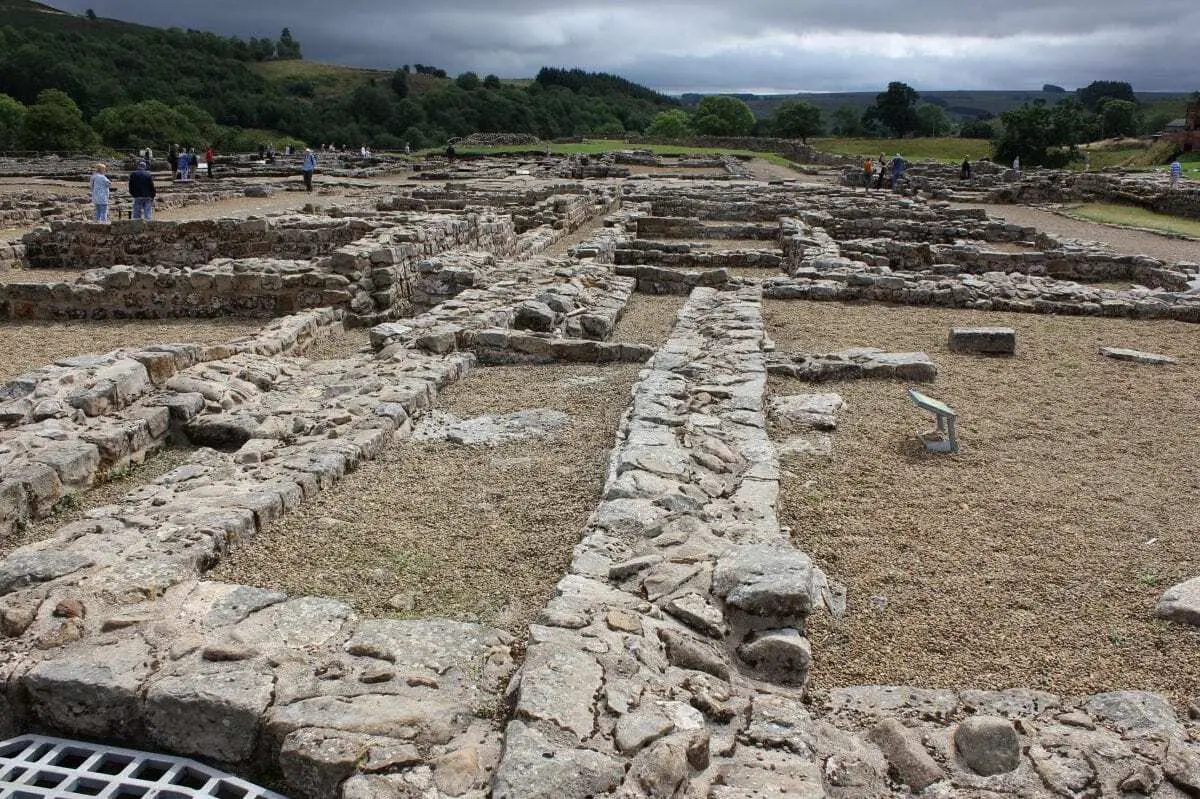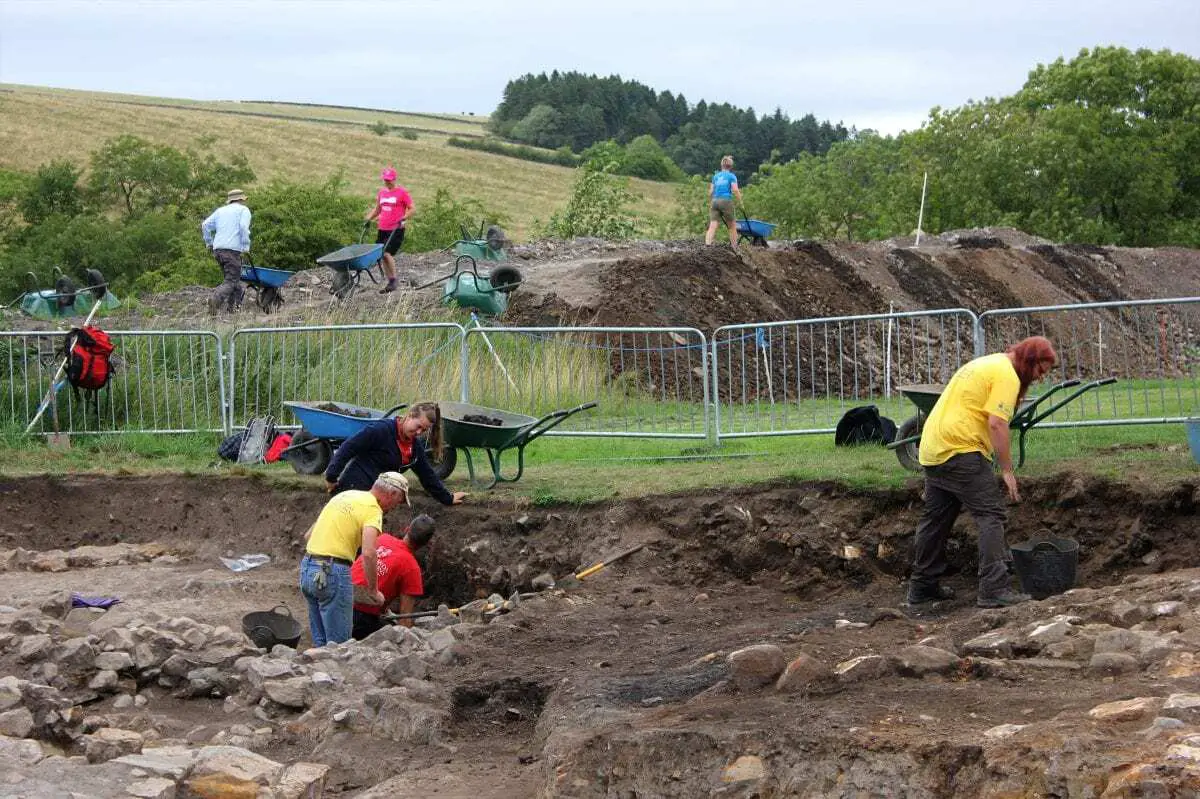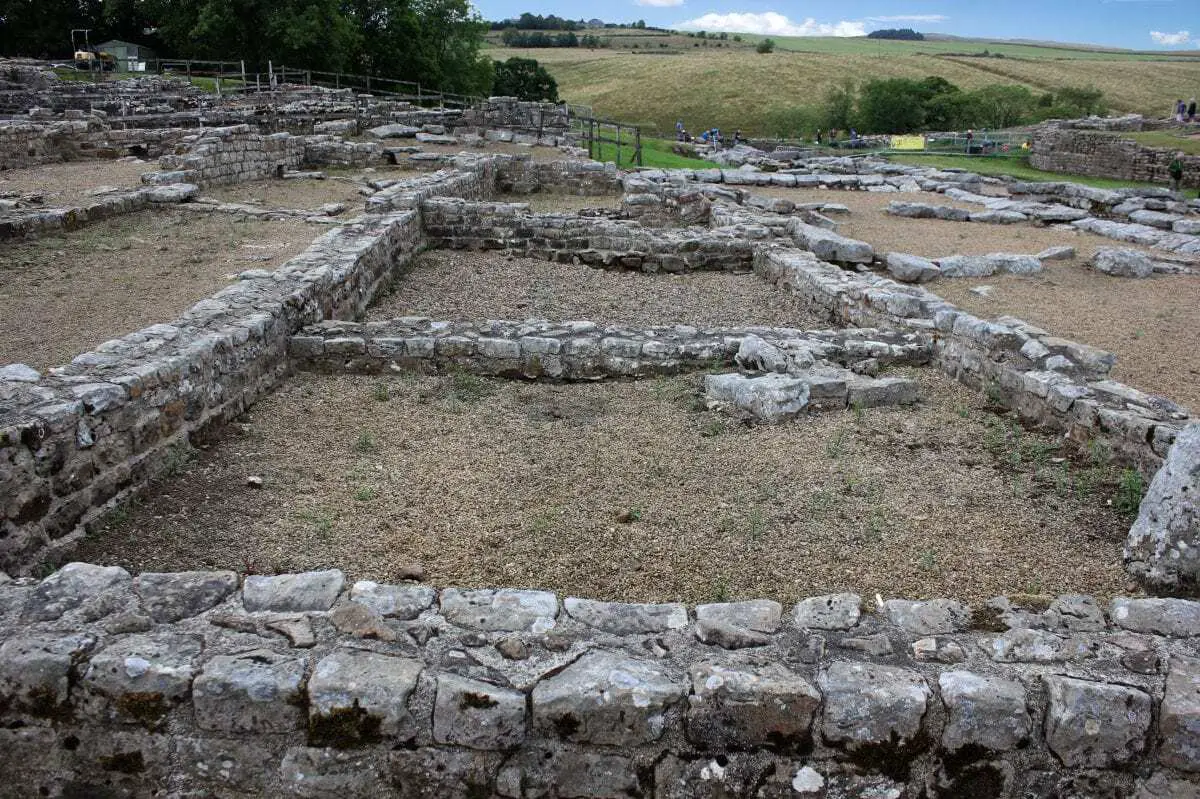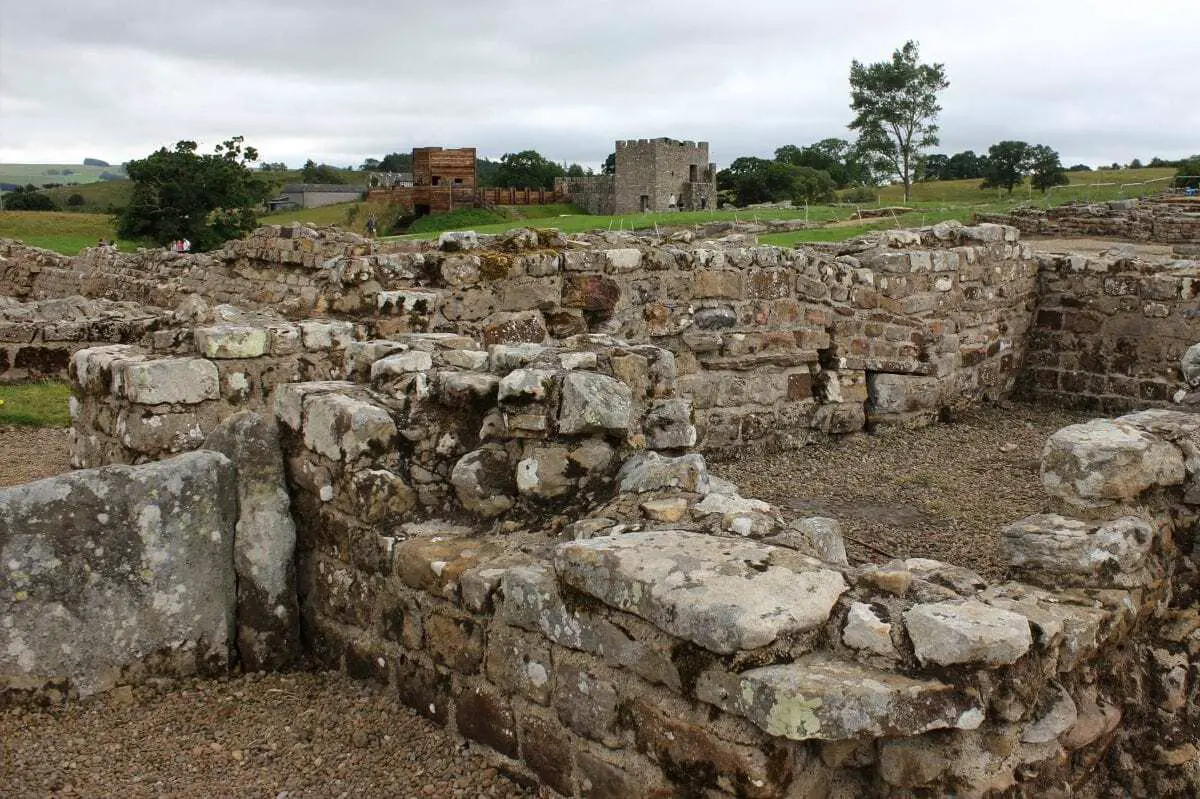Vindolanda (translated as “white field” or “white moor”) was a Roman auxiliary fort, located on the fringes of the Roman Empire in the province of Britannia.
Its position guarded a major Roman highway called the Stanegate, just south of Hadrian’s Wall and the frontier into Caledonia. The garrison consisted of infantry or cavalry auxilia, not components of Roman legions.
The first evidence of settlement or a timber fort at Vindolanda was constructed from around 70CE that saw a phase of consecutive demolition and reconstruction until Hadrian’s Wall was built around 122 CE.
During its occupation, no less than nine Roman forts were built in situ of timber or stone, creating one of the most complex archaeological sites in Britain and leaving a unique cultural legacy of frontier life.
A vicus, a self-governing village developed to the west of the fort. The vicus contained several rows of buildings, each comprised of several one-room chambers. To the south of the fort, a large thermae bath complex was also built for recreation and socialising.
Today Vindolanda is an active archaeological site (open to volunteers) that has been preserved thanks to the levels of anaerobic and oxygen-free conditions of the soil. A virtual time capsule, archaeologists have unearthed over 6000 perfectly preserved shoes, 800 textiles, wooden objects and the discovery of the Vindolanda tablets.



Vindolanda Tablets
The Vindolanda tablets are some of the oldest surviving documents in Britain that are written accounts of northern frontier life. Written on wooden leaf-tablets made from birch, alder or oak with carbon-based ink, they date from the 1st and 2nd century.
The tablets contain hundreds of various letters of correspondence in Roman cursive script and record official military matters as well as personal messages to and from members of the garrison of Vindolanda, their families, and their slaves.
Highlights of the tablets include an invitation to a birthday party held in about 100 AD, which is perhaps the oldest surviving document written in Latin by a woman. Visit Vindolanda Website





